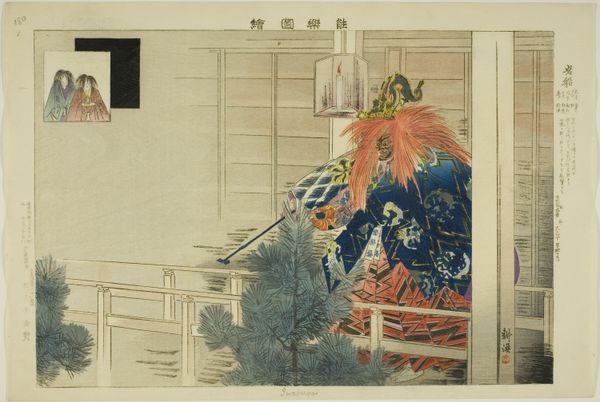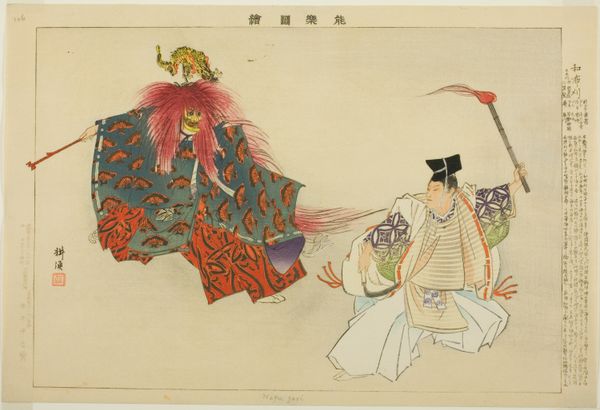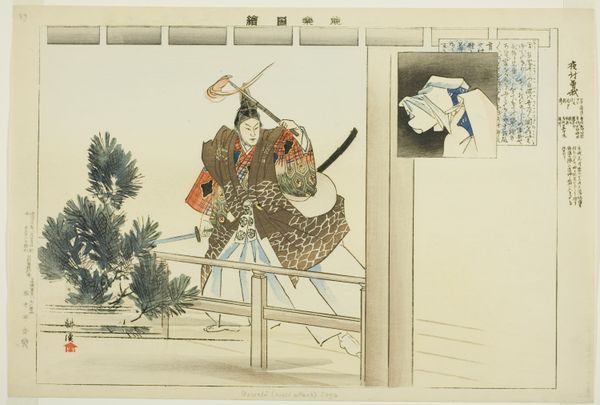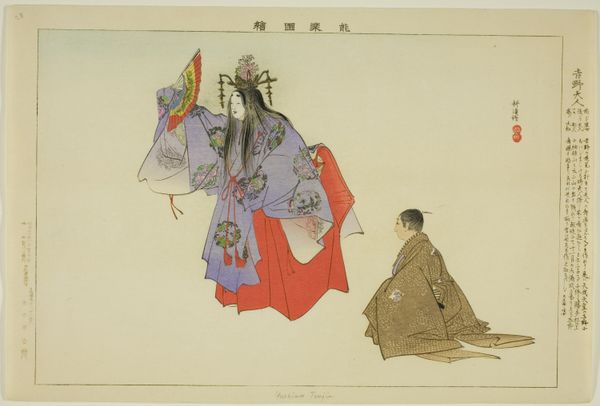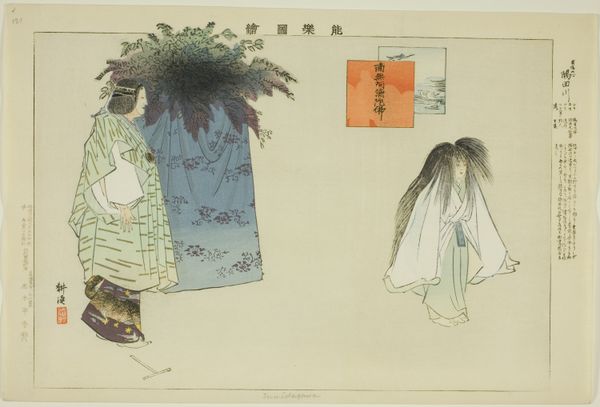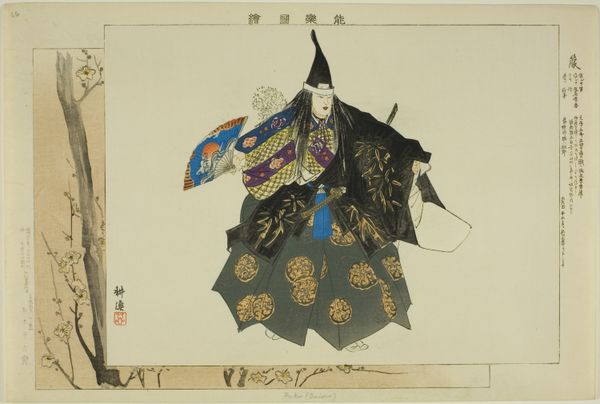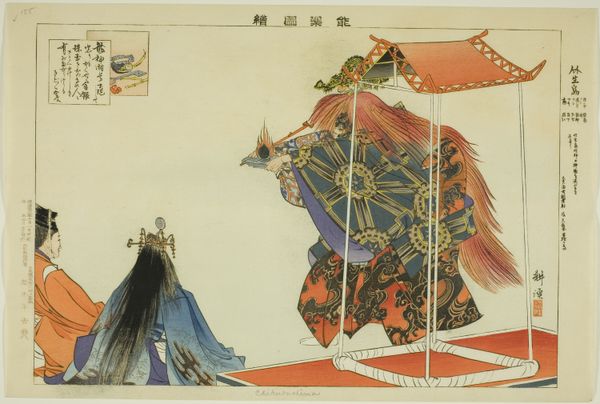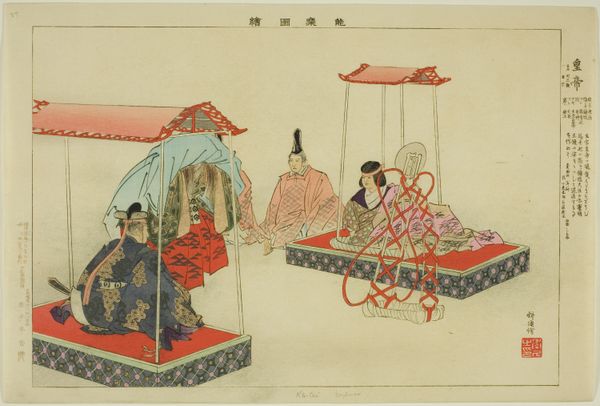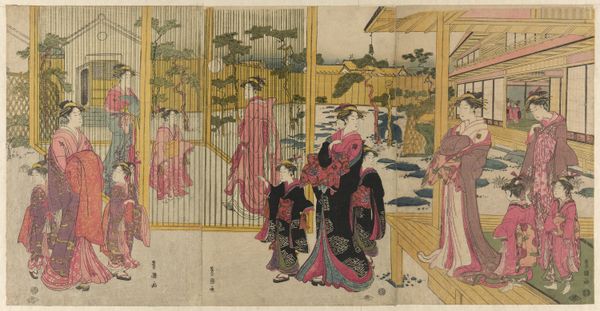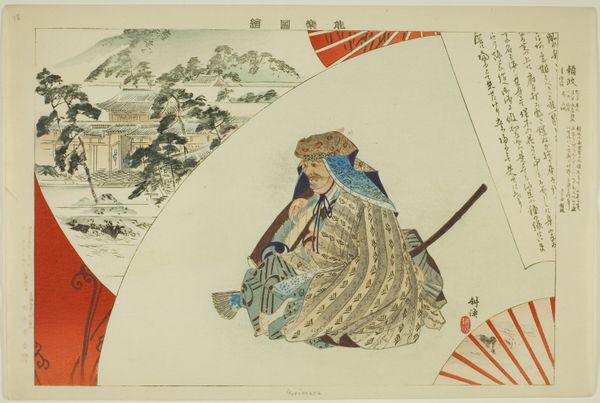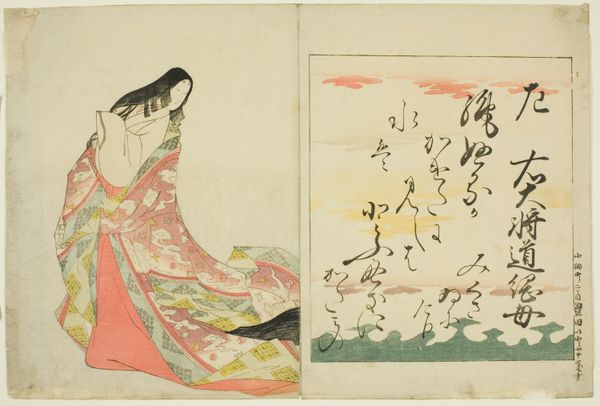
Mochizuki, from the series "Pictures of No Performances (Nogaku Zue)" 1898
0:00
0:00
Dimensions: Approx. 25.2 × 37.4 cm (10 × 14 4/3 in.)
Copyright: Public Domain
Curator: This intriguing print is titled "Mochizuki, from the series 'Pictures of No Performances (Nogaku Zue)'". It was created in 1898 by Tsukioka Kogyo, and is held here at The Art Institute of Chicago. What strikes you first about this image? Editor: Immediately, the asymmetry. The division of the picture plane into two distinct, almost clashing, compositional areas—one dynamic, the other relatively static—creates a palpable tension. Curator: Indeed. The dynamic panel illustrates the Mochizuki role within the context of Japanese Noh theater, rooted in ancient traditions. The red patterned kimono, the obscured face, even the upraised umbrella become signifiers. How might these elements communicate cultural meaning? Editor: The kimono's pattern, though obscured, appears complex—a suggestion of high status and ritual significance. And the umbrella, rather than simply shielding, acts as a theatrical device, enhancing the mystery surrounding the figure. We have to think about this as stagecraft as much as representation. Curator: Precisely. In Noh, masks and costumes are never just ornamentation. The mask for instance can portray characters with the ability to be gods, demons, spirits, men, women and even animals. The elaborate brocade patterns, the layering—these visualize not merely an individual but a powerful, almost archetypal character from cultural memory. The gestures of the player must be delivered to unlock these concepts. Editor: Let's also consider the contrasting aesthetic of the adjacent panel. Its spare composition emphasizes the materiality of the woodblock print—the subtle variations in the paper and ink, the controlled yet expressive lines of the figure. The tree and pale coloration give it an atmospheric feel and act to ground and offset the first image, no? Curator: I think you're right. Note how the two pine boughs frame the Noh actor in both panels. The symbolic connection to nature, longevity, and steadfastness ties the theatrical artifice to a deeper, cyclical understanding of life. So the drama unfolds within and is validated by a symbolic sense of history. Editor: Fascinating to observe how Tsukioka Kogyo has distilled these layered narratives and codified meanings into such precise formal structures. Curator: The "Pictures of No Performances" series truly captures how visual elements can invoke profound cultural and psychological narratives. Editor: Absolutely, prompting us to consider not only what is represented, but also how it is rendered, and more importantly, felt and then conveyed throughout history.
Comments
No comments
Be the first to comment and join the conversation on the ultimate creative platform.
